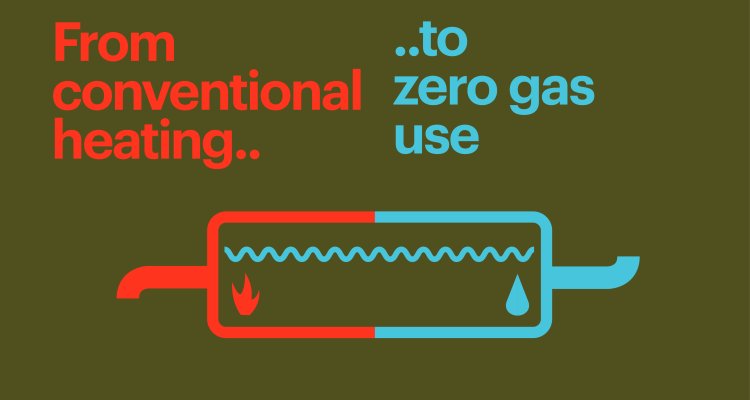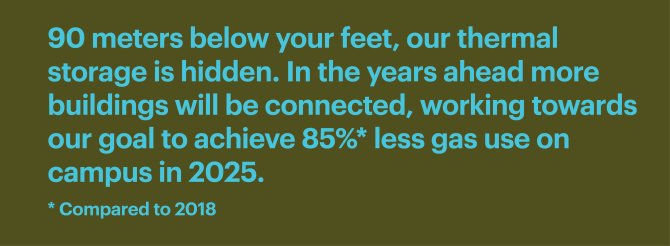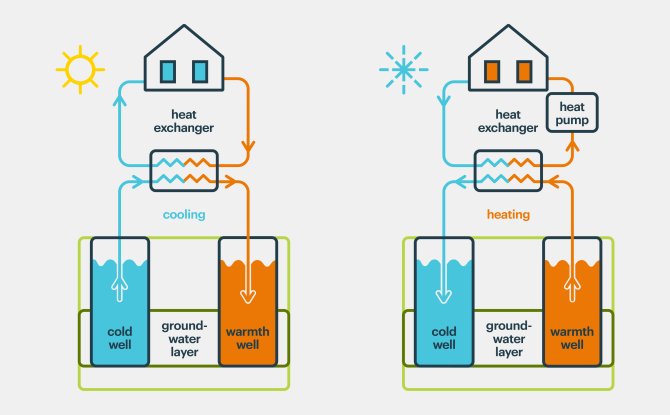
From conventional heating.. to zero gas use
Ever wondered what’s below your feet on campus? Below the humus and topsoil there is a hidden thermal storage gem. This Aquifer Thermal Energy Storage (ATES) is key in achieving our goal to use 85% less gas on campus in 2025 compared to 2018.
We want to limit CO2 emissions, reduce energy costs and ultimately achieve zero gas use. Nearly all buildings and greenhouses of WUR on campus will use ATES for heating and cooling in the future.

So, how does thermal storage or so-called ATES work? ATES is a form of a sustainable energy supply to provide buildings with heating or cooling. Underground interconnected heat and cold storage wells function as batteries. In summer, cold water is pumped up from the cold well and via a heat exchanger passed on to the building’s systems. As the building gives off heat to the cold water, the water is pumped back to the hot well. In winter, this process is in reverse as hot water is pumped up, used to heat the ventilation air, the water cools down and pumped back to the cold well. The groundwater is therefore pumped back and forth between the cold well and the hot well: read more about this process here.

Where can I find the Aquifer Thermal Storage on campus? Go for an ATES walk around campus and learn everything about it! You can find the route here. Nine cold and nine warm wells are connected by two separate distribution loops. Forum, Radix, Atlas, Actio, Impulse, Helix and Orion already make use of ATES for heating and cooling. Also the newly built education building Aurora is connected to the system.
Does 85%* less gas use on campus in 2025 sound ambitious? It sure is. Especially because we still use quite some amounts of gas currently on campus. Although we have work ahead, we expect that eventually all buildings and greenhouses on campus will use ATES for heating and cooling.